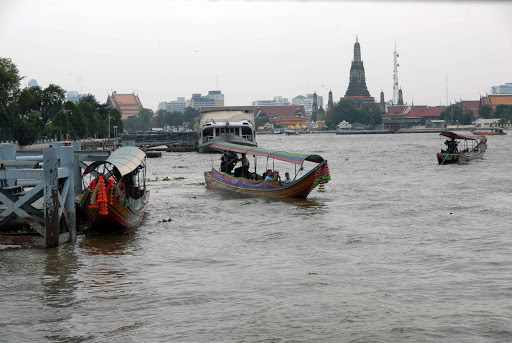 |
| Reclining Buddha 151 ft. long.-made of brick & plater and gold leaf. |
 Wat Pho -Temple- was built in the 16th Century by Rama 1 (r1782-1809). |
 |
| Serene Buddha reclining on right arm, golden flowers in vase by elbow. |
 |
| The feet are studded with mother- of- pearl inlay. |
 |
There are 100s of Chedi in the grounds of Wat Pho, but the four most important are the Great Chedi which honor the first four kings of the Chakri dynasty.
|
 Ancient medical paintings. |
| Ancient medical painting. |






























